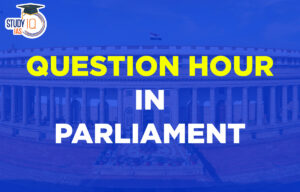Current Affairs 5th May 2023 for UPSC Prelims Exam
Araku Valley
Context: The increase in pre-seasonal rainfall in the Araku Valley is expected to improve the yield and quality of the coffee crop- Arabica coffee that recently received the GI Tag.
About Araku Valley:
- Araku Valley is located in the Eastern Ghats of Andhra Pradesh.
- It is situated about 115 kilometers west of Visakhapatnam city, known for its natural beauty, coffee plantations, and indigenous tribes.
- The valley is situated at an elevation of about 1,300 meters above sea level and is surrounded by the Eastern Ghats Mountain range.
Coffee Plantations:
- One of the major attractions of Araku Valley is the coffee plantations, which are spread across a large area.
- The coffee grown in Araku Valley is of the Arabica and Robusta varieties.
- Araku coffee comes from the hilly tracks of Visakhapatnam district of Andhra Pradesh and Odisha region grown at an elevation of 900-1100m Mean Sea Level (MSL).
- Department for Promotion of Industry and Internal Trade, under the Ministry of Commerce and Industry, has recently awarded GI tag to Araku Valley Arabica coffee.
Tribes:
- The people of the Bonds tribe live in the dense forests and hills of the Araku valley in the Visakhapatnam district.
- They are also known as Bondo and Poroju.
- The tribes are known for their handicrafts, which include pottery, weaving, and basketry.
Borra Caves:
- Borra Caves, also known as Borra Guhalu, are located in the Visakhapatnam district of Andhra Pradesh, among the Ananthagiri hills of the Araku Valley.
- These caves are thought to be more than 150 million years old.
- The cave’s name is derived from a hole in the roof above its central area.
- The Gosthani River flows through the caves.
- These are at a height of 1400 meters above sea level.
Stalactite and Stalagmite Formations
- Borra caves themselves are limestone formations, that facilitate stalactite and stalagmite formations.
- In the caves, Paleolithic tools have been discovered such as stone implements from the middle Paleolithic culture, which date back 30,000 to 50,000 years and confirm human presence.
Stalactite:
It is an icicle-shaped formation that hangs from the ceiling of a cave and is produced by the precipitation of minerals from water dripping through the cave ceiling. Most stalactites have pointed tips.
Stalagmite:
- It is an upward-growing mound of mineral deposits that have precipitated from water dripping onto the floor of a cave. Most stalagmites have rounded or flattened tips.
- The dominant mineral in such deposits is calcite (calcium carbonate), and the largest displays are formed in caves of limestone and dolomite.
- Other minerals that may be deposited include other carbonates, opal, chalcedony, limonite, and some sulfides.
Current Affairs 4th May 2023 for UPSC Prelims Exam
Central Bank Digital Currency (CBDC)
Context: RBI has urged for increased adoption of CBDC for efficient cross-border payment.
About Central Bank Digital Currency (CBDC)
- Central Bank Digital Currency (CBDC), or national digital currency, is simply the digital form of a country’s fiat currency. Instead of printing paper currency or minting coins, the central bank issues electronic tokens.
- This token value is backed by the full faith and credit of the government.
- CBDC would need an entirely new centralized payment system. This system would be linked to electronic wallets that reside on prepaid cards, smartphones, or other electronic devices.
- Some Countries that have already rolled out their national digital currency are:
- Sweden is conducting real-world trials of their digital currency (krona).
- The Bahamas already issued their digital currency “Sand Dollar” to all citizens.
- China started a trial run of their digital currency e- RMB amid pandemic. They plan to implement pan-china in 2022. This is the first national digital currency operated by a major economy.
CBDC in India: The inter-ministerial SC Garg Committee, recommended that India should launch fiat money in digital form.
- India’s fairly high currency-to-GDP ratio holds out another benefit of CBDC to the extent large cash usage can be replaced by CBDC, the cost of paper currency can be substantially reduced.
- The need for inter-bank settlement would disappear as it would be a central bank liability handed over from one person to another.
- The Cryptocurrency and Regulation of Official Digital Currency Bill, 2021, was recently introduced. India launched its first digital rupee, also known as e₹-R, on December 1, 2022.
| Advantages of CBDC | Disadvantages of CBDC |
| Improving efficiency in financial transactions | Potential cybersecurity threats |
| Reduction of systemic risks | Lack of digital literacy |
| Opportunity for private investment | Threat to privacy |
| Reducing volatility compared to private cryptocurrencies | Challenges in regulation and taxation |
| Better macroeconomic management | Fiscal and monetary policy complications |
| Prevention of counterfeiting and corruption | Bank run when many depositors want to withdraw money in fragile environments. |
| Facilitates negative interest rates | Difficulty in ensuring equal access to CBDC |
India-UAE CEPA
Context: India-UAE Comprehensive Economic Partnership Agreement (CEPA) recently completed one year of its existence.
India-UAE CEPA
- India-UAE Comprehensive Economic Partnership Agreement (CEPA) was signed in February 2022, and officially entered into force in May 2022.
- Significance: CEPA is expected to increase the total value of bilateral trade in goods to over $100 billion and trade in services to over $15 billion within five years.
- CEPA: It is a type of free trade pact that covers negotiation on the trade in services and investment, and other areas of economic partnership.
- It may also include areas such as trade facilitation and customs cooperation, competition, and IPR.
- CEPA is more comprehensive than Free Trade Agreements. India has CEPA agreements with South Korea and Japan.
Major achievements of India-UAE CEPA
- Increase in bilateral trade: During the CEPA Implementation period (May 22 to Mar 23), bilateral trade has witnessed growth from $67.5 billion (May 21-Mar 2022) to $76.9 billion (May 22-Mar 2023), which is an increase of 14%.
- Indian exports: During CEPA implementation period, India’s exports to the UAE grew from $26.2 billion (May 21 – March 22) to $28.5 billion (May 22 – March 23); an 8.5% y-o-y growth.
- Beneficiary export sectors: Mineral Fuels; Electrical Machinery (telephone equipment); Gems & Jewellery; Automobiles; cosmetic products; Other Machinery; Rice; Coffee/Tea/Spices; Agri Products; Chemical Products.
- Beneficiaries: Number of Preferential Certificates of Origin (COOs) issued under the CEPA increased from 415 in May 2022 to 8440 in March 2023.
- Duty exemption: UAE has eliminated duties on 97.4% of its tariff lines corresponding to 99% of imports from India. India has obtained immediate duty elimination on over 80% of its tariff lines corresponding to 90% of its exports in value terms.
Bandhavgarh National Park
Context: Recently, Archeologists have stumbled on a 1,500-year-old rock painting and numerous 1,800-2,000-year-old man-made waterbodies in Bandhavgarh National Park.
About
- Bandhavgarh National Park is located in the Vindhya Hills of the Umaria district in Madhya Pradesh.
- The national park consists of a core area of 105 sq km and a buffer area of approximately 400 sq km.
- Bandhavgarh was declared a national park in 1968 and then became Tiger Reserve in 1993.
- It is known for its high density of Tigers, and it is a famous Natural hub for white tigers.
- There are three core zones in the national park such as Tala, Khitauli, and Magadhi.
- Climate: Tropical monsoon climatic zone.
- Historical Significance:
- Its mention can be found in the ancient books of the ‘Narad Pancharatra’ and the ‘Shiv Purana’ that this place is associated with Ramayana.
- The Bandhavgarh Fort is a great masterpiece of “Treta Yuga” (one of the ages of mankind in Hinduism).
- It was ruled by major dynasties including Sengars, the Kalchuris, and the Baghels (believed to rule the regions for a longer period).
- Flora:
- The Park consists of mixed vegetation ranging from tall grasslands to thick Sal Forest.
- Topography comprises of hills, valleys, rivers, marshes, and meadows to give rise to diverse vegetation.
- It is best known for its Evergreen Sal Forest and Mixed Forest.
- Fauna:
- The wildlife collection of Bandhavgarh includes 250 species of birds and 80 species of butterflies in addition to 37 species of mammals.
- Species Found: Asiatic Jackal, Bengal Fox, Sloth Bear, Striped Hyena, Leopard and Tiger, Wild Pigs, Nilgai, Chinkara, and Gaur (a herbivore and the only coarse feeder).
- Birds like Paradise Flycatcher, Indian Pitta, Shikra, long-billed Vulture, White-backed shama, etc. are also found.

Telecom Regulatory Authority of India (TRAI)
Context: Recently, Telecom Regulatory Authority of India (TRAI) chairperson said, there should ideally be “complete forbearance” in regulating broadcast tariffs.
About
- Telecom Regulatory Authority of India (TRAI) is a statutory body set up by the Government of India under section 3 of the Telecom Regulatory Authority of India Act, 1997.
- It comes under the Ministry of Communications and Broadcasting.
- Composition of TRAI:
- Members: The TRAI consists of a chairperson, two whole-time members and two part-time members, all of which are appointed by the Government of India.
- Tenure of Members: The Chairperson and other members shall hold their office for a term of three years or till the age of 65 years, whichever is earlier.
- Objectives of TRAI:
- TRAI’s mission is to create and nurture conditions for growth of telecommunications in the country.
- TRAI regulates telecom services including fixation/revision of tariffs for telecom services which were earlier vested in the Central Government.
- It also aims to provide a fair and transparent policy environment which promotes a level playing field and facilitates fair competition.
- Government Control over TRAI:
- TRAI is not a completely independent telecom regulator.
- Under section 25 of the Act, it has the power to issue directions which are binding on TRAI.
- The TRAI is also funded by the Central Government.
- The recommendations made by the TRAI are not binding on the Central Government.
- Central Government has to mandatorily ask for recommendations from TRAI with respect to the need and timing of new service providers and the terms and conditions of the license to be granted to the service provider.
- TRAI also has the power to notify in the official gazette the rates at which telecommunication services are being provided in and outside India.
- The TRAI Act was amended by an ordinance, effective from 24 January 2000, establishing a Telecommunications Dispute Settlement and Appellate Tribunal (TDSAT) to take over the adjudicatory and disputes functions from TRAI.
- TDSAT was set up to adjudicate any dispute between a licensor and a licensee, between two or more service providers, between a service provider and a group of consumers, and to hear and dispose of appeals against any direction, decision or order of TRAI.
- TRAI has brought out the Mycall app, MySpeed app and Do not disturb (DND 2.0) apps to ensure transparency between consumers and telecom operators.
- Headquarters: New Delhi.


 Question Hour in Parliament: Meaning, Ty...
Question Hour in Parliament: Meaning, Ty...
 Daily Quiz 18 July 2025
Daily Quiz 18 July 2025





















